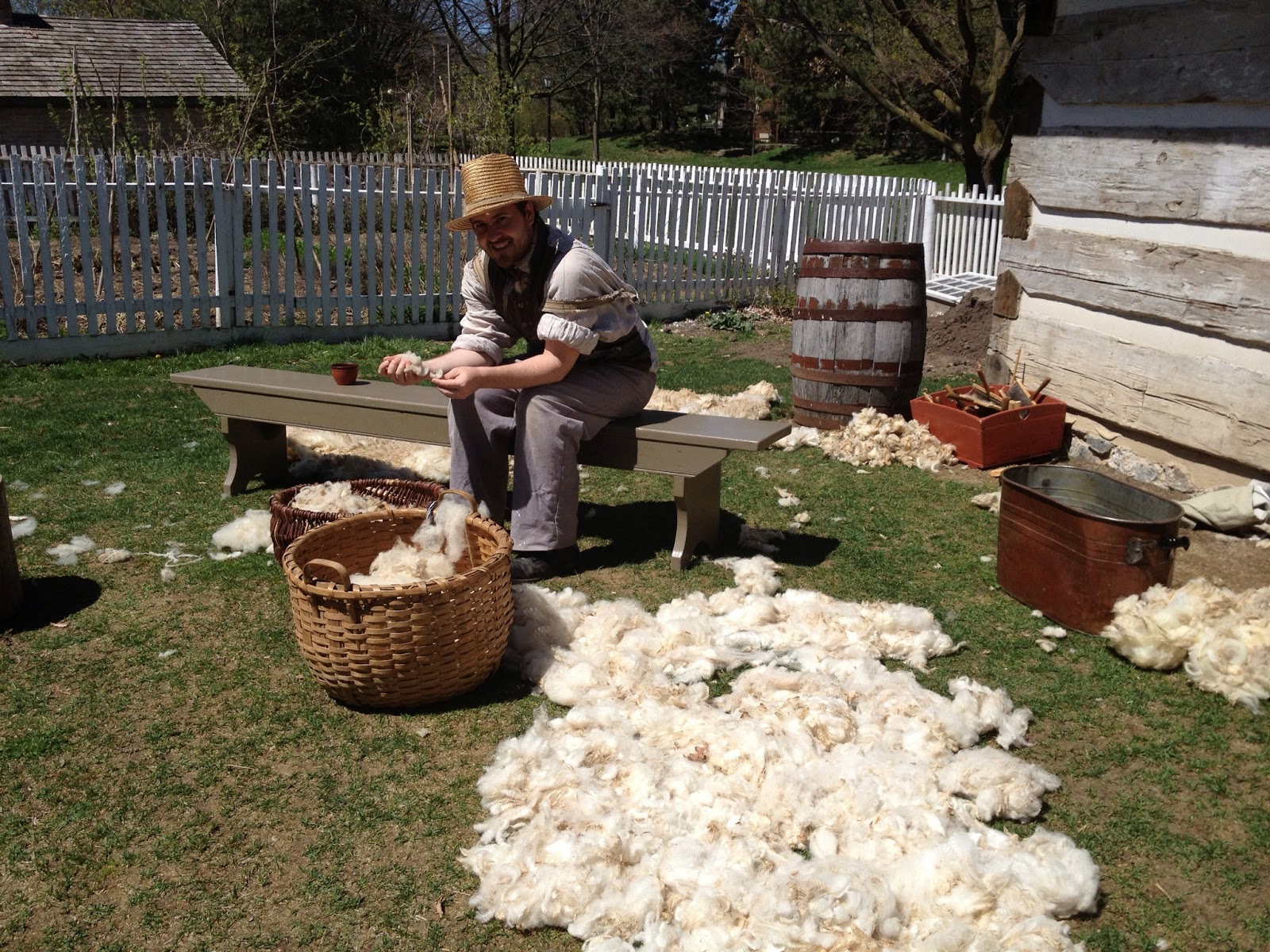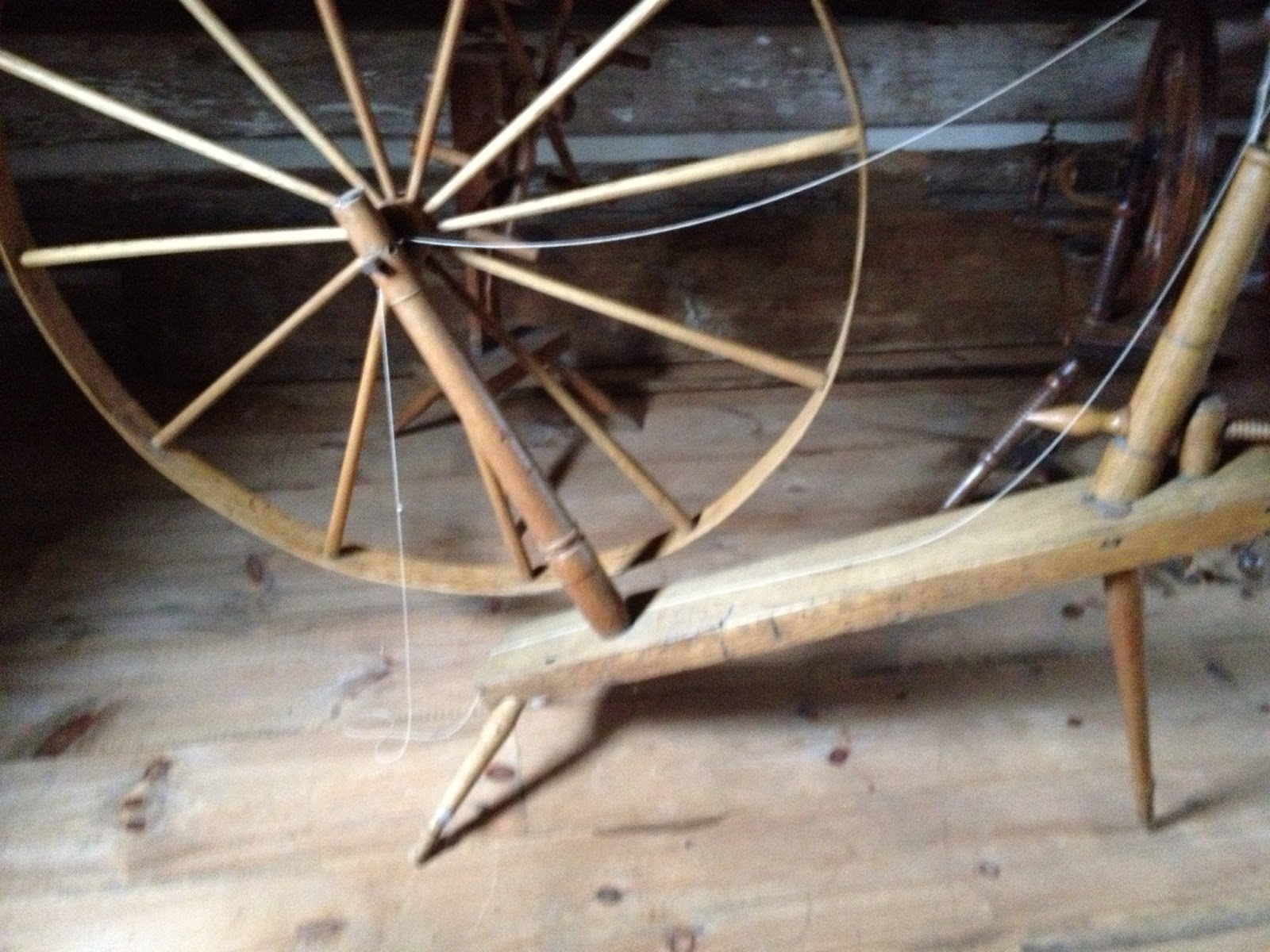A barn raising bee or work bee is best described as a collective decision or industry whereby all able-bodied men of the community are expected to (and do) turn up to a particular location with the intent of building a barn-together. Collectively, many hands make light work AND many hands that are fed well and work for "free" are also thrifty workers (at least for the person whose barn is being constructed). Barns are requisite buildings on a farm and serve multiple purposes: housing farm animals, tools and equipment. (Some barns are also business offices for busy Mennonites who operate shops or side businesses in addition to maintaining their farm). For more information on barn raising (including photos) see:
http://en.wikipedia.org/wiki/Barn_raising
Of course, there are many other kinds of working bees: whereby the workload for a project is collectively shared: butchering, cider making (apple pressing), sheep shearing and of course as we saw in the previous post, quilting.
Feeding the Masses:
As stated, then, the community shares in the workload collectively but the expectation is that they are also going to be well-fed following their work! While the men worked, so did the women--making food to feed them. All of them (sometimes, hundreds of them). But, never fear, they were up to the task.
For the most part, Pennsylvania German food is substantial fare--hearty and thrifty. To accomplish this, most early farms cultivated a kitchen garden in addition to field crops, thereby supplementing the variety of small-scale food needs for a large family.
 | |
| Taking turns watering the four-square kitchen garden at Joseph Schneider Haus |
The kitchen garden provided herbs for cooking and medicine, vegetables and even utility plants like hops (for beer and bread yeast making) and madder root for dying wool. Every farm wife (and young woman) would have known how much food was required to feed her brood over the course of the year and would plant enough, accordingly. Even treats would have been accounted for and the ingredients to make them would be added to the larder to be used at the most auspicious times--usually for a celebration like a wedding or at Christmas. The Pennsylvania German pantry was well-stocked, indeed.
 |
| The Pantry or Speisekammer at Joseph Schneider Haus is filled with period crocks and baskets that would have been well used by the Schneider family when they lived there. |
Some Traditional Recipes
Pie Pastry Dough
1 lb. lard (2 cups)
2 tsp salt
5 1/2 cups of pastry flour
1 cup of cold water (can even add ice chips to it)
Method:
Combine flour and salt, adding lard. Blend until mixture resembles crumbs. At this point, add cold water 1 Tbsp at a time. (Be very careful with how much water you add since too much water can weigh down the crust and make it very heavy). After each addition of water, lightly toss mixture with a fork. Combine the adding of water and tossing of mixture until the pastry holds together in a ball (this means that you may not need all of the water--altitude and seasonal weather-temperature & humidity can also affect how much water you will need). Chill until needed.
Pastry for 5-6 nine inch pie plates.
The next recipe will seem odd to the modern palate but bear with me.A truly undervalued and forgotten delicacy, Vinegar Pie, is both delicious and thrifty.Yes, I said Vinegar Pie (Vinegar Pie tastes a lot like a Butter Tar, Chess Pie, Treacle Tart or Pecan Pie). This is a very old recipe and indicates what a woman could do with very little at hand and comes from a time when every woman knew how to (and did) cook all of the food her family ate from scratch. In his book "America Eats" food historian, William Woys Weaver suggests that this pie came about when access to costlier items such as lemons were not available. Apple cider vinegar was ubiquitous in rural homesteads and being versatile and healthy eventually made its way into a pie.Some versions of the Vinegar Pie add some lemons and even a meringue topping (yes I have a recipe for this so if you want it, just email me). The result of this would be similar, then, to a poor man's lemon meringue pie. The Vinegar Pie version I include here today is presumably older and certainly more simple to make and the result is quite tasty. You can even add raisins or nuts, if desired.
Vinegar Pie
1 cup cold water
1 egg
1 cup sugar (scant)
1 tbsp apple cider vinegar
1 heaping tbsp flour
Method:
Beat together eggs, sugar and flour. Add vinegar and cold water. Flavour with freshly grated nutmeg to taste. this makes enough filling for two 9 inch pies. Be very careful as the filling is quite liquid-y (what a word!). I might even suggest putting the pastry lined pans in the oven first and then adding the liquid filling to them to avoid spills. Bake at 350 degrees F. until done (check often, will vary according to your oven). Filling will be set and not runny when done.
Lemon Sponge Pie (speaking of lemons, another old Pennsylvania recipe)
Pastry for one 9 inch pie
1 cup white sugar
2 tbsp butter
3 eggs, separated
3 tablespoons of flour
1/2 tsp salt
Juice and grated rind of 1 lemon
1 cup of milk
Method:
Cream butter, adding the sugar and egg yolks. Beat well until stiff and set aside. Add the flour, salt,lemon juice and rind as well as the milk. Fold in the stiffly beaten egg whites and pour into an unbaked pie shell. Bake at 350 degrees F. for 45 minutes or so. Check often--should be set when done.
The next pie, I am including as a prelude to butter tarts. Sugar Pie or Tarte de Sucre is an old but common recipe for a pie that is still popular in Quebec, Canada to this day.
 |
| This photo shows a slice of Sugar Pie, accompanied by a scoop of French Vanilla ice cream and a generous dollop of whipped cream to boot! http://frenchfood.about.com/od/frenchcookingtechniques/ss/sugarpie.htm |
According to tradition, the oldest version of this pie supposedly contained only three ingredients
and was supposed to be mixed right in the pie pan, with the filling stirred by a finger.
Filling:
1 cup brown sugar - packed (but not too tightly)
1 tbsp flour
Half a pint of whipping cream minus 2 tablespoons (200 ml)
Another Sugar Pie version (complete with video):
http://allrecipes.com/recipe/quebec-city-sugar-pie-with-thick-cream/
What all of these pies have in common is that they are relatively simple to make with ingredients that a pioneer or early settler would have had on hand or had access to (Yes I am thinking about the lemons. These would have been pricey but accessible if you were willing or able to pay the price for them hence the use of such ingredients as vinegar, eggs and in the case of the sugar pie--maple syrup). This brings me to a Canadian classic--the butter tart.
Now, my grandmother's recipe for butter tarts is a little different from some that I have found while doing research. Many of the recipes are quite overly sweet, I find, but my grandmother used vinegar in her filling which is similar to the historic pie previously mentioned. I grew up with this and to me I prefer its taste over the cloyingly sweet ones that many a grocery store bakery tries to pawn off. What is interesting is that the magazine Canadian Living deemed a version of this recipe as being the "Best Butter Tarts" (It is very similar to our family recipe except we did not add coconut to ours, preferring the plain filling. Sometimes, depending upon the taste of the person they were made for, my mother would add raisins or nuts. I like them plain and a little drippy)!
http://www.canadianliving.com/food/baking_and_desserts/best_butter_tarts.php
Another similar version with how-to pictures:
http://www.acanadianfoodie.com/2010/01/09/butter-tarts/
Enjoy!





































